Big White's Wildflowers: The Field Guide
About alpine meadows
Alpine meadows, considered one of Canada’s most beautiful natural phenomena, occur when alpine wildflowers make their spectacular appearance briefly during the spring and summer months, despite the harsh growing conditions of the alpine environment. Putting down roots in a growing environment that includes adversities like low temperatures, dryness, and ultraviolet radiation (not to mention being buried under 3 metres of snow all winter long!) – you could say that alpine wildflowers are some of the toughest blossoms in B.C.
Alpine meadows are so special because they aren’t made of the types of flowers you can find in your local florist's shop. No, the colourful wildflowers of Canada’s alpine meadows live a short, miraculous lifespan of just a few months each summer. Plus, they are only found at the highest elevations of B.C., meaning that a pair of hiking boots is usually involved in admiring their beauty! But trust us, the prismatic panorama of colours is worth every step. In fact, if you visited the same alpine meadow at different times throughout the summer, you would see a different display of colours month to month, as alpine blossoms all bloom at different times, creating a continually changing wave of colour across the high-altitude hills.
Ready to start exploring?
Here at Big White, we have an extensive network of alpine hiking trails that allow you to admire some of B.C.’s most beautiful native blossoms. Now, lace up your boots, grab your camera, and hit the trails to walk with the wildflowers. Below are a few alpine wildflower varieties found in Big White’s sprawling mountain meadows at the top of Bullet Chair. Take a sightseeing chairlift ride to the top of the Bullet Chair for easy access to the hiking trails - open Thursday to Sunday and holiday Mondays throughout the summer. Print this guide and take it on a trip into the alpine to count how many you can see!

Fireweed (Epilobium angustifolium)
Fireweed is a perennial with tall spikes of rose-purple flowers that grow from 0.5 to 3 metres in height. Since its seeds need extreme heat to crack open, Fireweed commonly grows in places where there has been a forest fire or fire disturbance. Fun fact: Fireweed is the floral emblem of Canada’s Yukon territory and is part of the evening-primrose family.
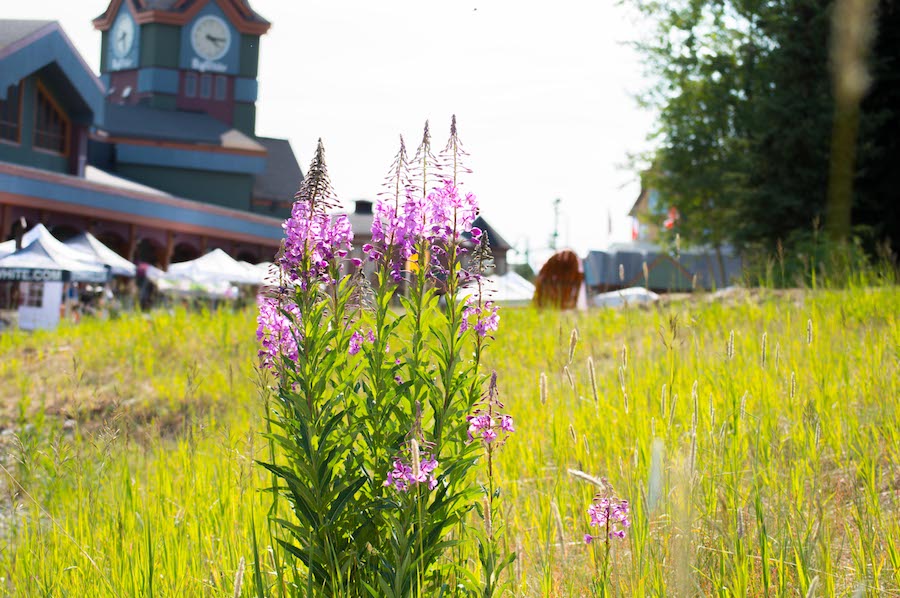
Common Red Paintbrush (Castilleja)
The Common Red Paintbrush has a striking red blossom that grows on top of a straight, hairy stem typically 30 to 50 cm in height. The upper part of the Red Paintbrush resembles a brush covered with bright dyes. It was often used by various tribes of Native Americans. Fun Fact: The paintbrush goes by many names, including Prairie Fire, Grandmother's Hair, Painted Cup, Indian Red Paintbrush, Painted Lady, and Butterfly Weed.
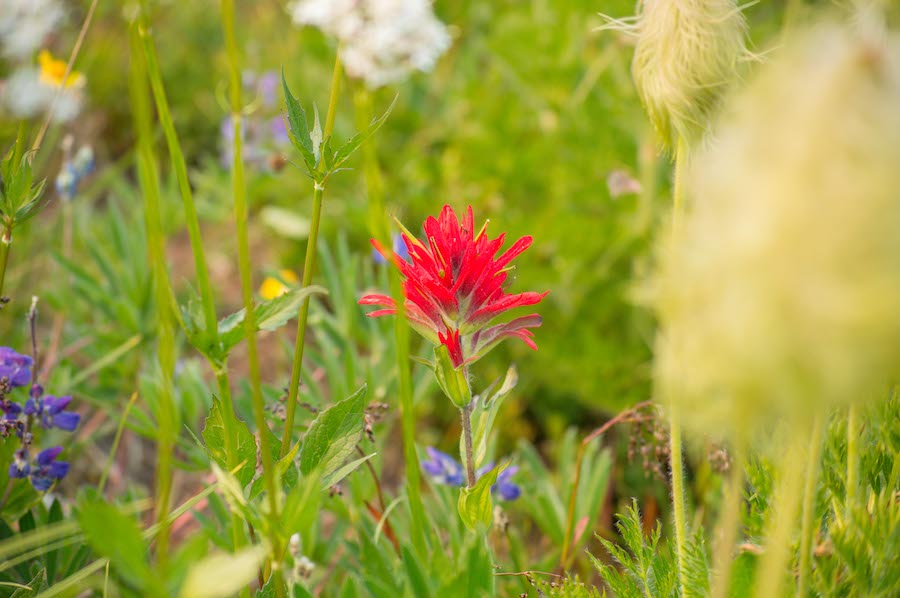
Arctic Lupin (Lupinus arcticus)
The Arctic lupin has grey-green leaves covered with soft, silver hairs and a blossom that consists of 5 to 28 narrow, pointed leaflets and it can grow anywhere from 0.5 to 1.5 metres high! It's native to northwestern North America, from Oregon north to Alaska and Nunavut, and known as one of the most common wildflowers in B.C. Fun Fact: The lupin is a member of the pea family.
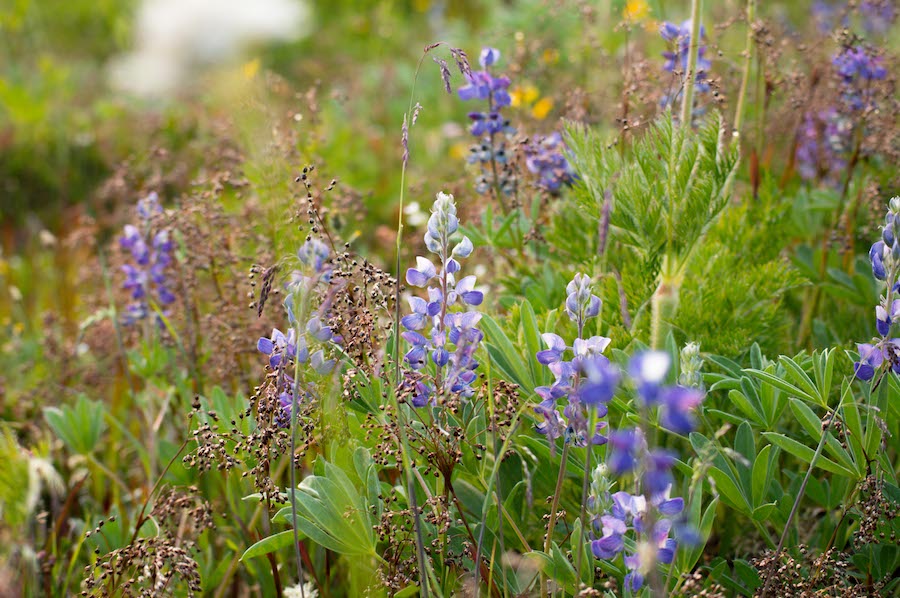
Pasque flower (Anemone occidentalis)
The Pasque flower is native to the meadows, foothills and prairies of North America and can be easily identified by its showy, bell-shaped flowers and attractive, fluffy seed heads. The plant's yellow blossoms bloom around late March to early April. It is one of the first signs of spring, particularly in cold climates, like Canada. The bloom will last about 2 weeks, after which the leaves expand and the flowering stalks will lengthen to create a whimsical, fluffy head that helps disperse its seeds in the wind. Fun Fact: The flower blooms in early spring, around Easter time. The name “Pasque” means Easter in French.
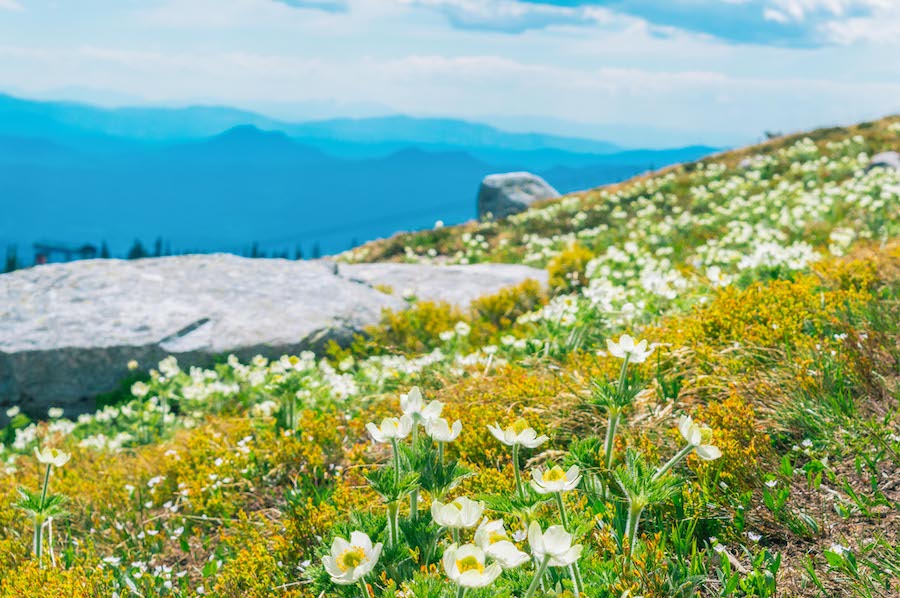

Western aster (Symphyotrichum ascendens)
Western asters are beautiful perennials that are found on the wild mountaintops of North America. The central disk of the flower is surrounded by a ring of petals in a brilliant shade of purple. The word 'Aster' is of Greek derivation and refers to this flower’s star-like blossom. Fun Fact: Asters are oftentimes a prime target for birds, bees and butterflies because they are fragrant and colourful.

White Yarrow (Achillea millefolium)
White Yarrow is one of the toughest wildflowers around, known to survive in many habitats including forests, meadows, grasslands, mountaintops, coastal areas and even deserts! It has one or more stems that can reach 0.15 to 0.90 metres in height with feathery leaves 5 to 20 cm long. The White Yarrow is easily identified by its cluster of miniature white flowers that attract many butterflies, hoverflies, and bumble bees. Fun Fact: Yarrow was used as food in the 17th century. Leaves were prepared and consumed like spinach.

Mountain Arnica (Arnica latifolia)
Arnica is a perennial plant of the sunflower family. It gets its name from its soft, hairy leaves – like lambs’ ears – from the Greek word arni or “lamb”. It has large, showy yellow blossoms with long ray florets. Fun Fact: Homeopathic preparations of Arnica are widely marketed and used for ailments such as sprains, bruising, and osteoarthritis.
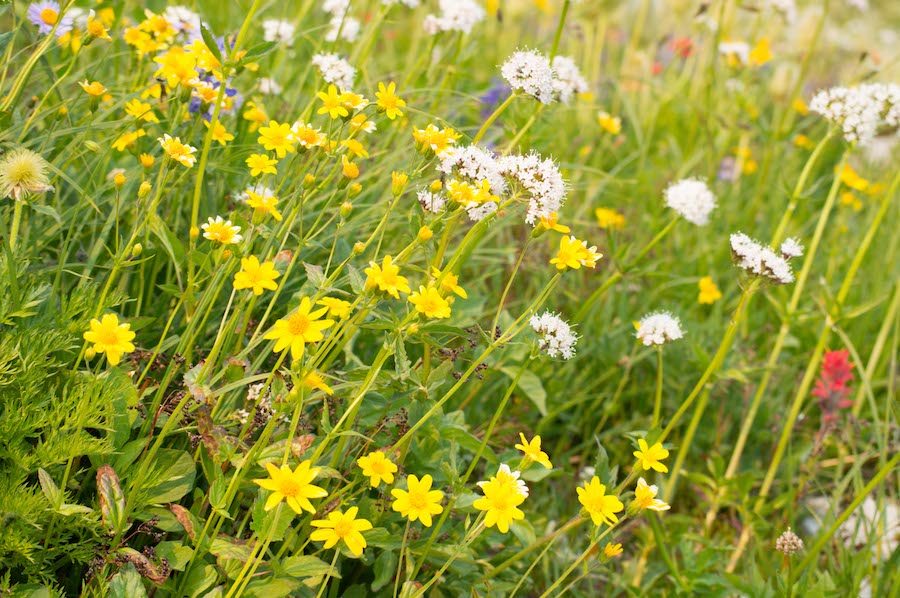
Scouler’s hawkweed (Hieracium scouleri)
Bright and beautiful, the Scouler’s hawkweed is a perennial that blooms from June – September and grows 0.3 to 1.5 metres in height. One plant typically has 5 to 30 dandelion-like flowers on a stem covered in fine, short hairs. Fun Fact: While its colour may be cheerful, this hawkweed is known in the botany community as one of the most invasive, troublesome plants in the Pacific Northwest because of its tenacious survival skills, like its air-born seed dispersion method and its bad habit of displacing other native plants.
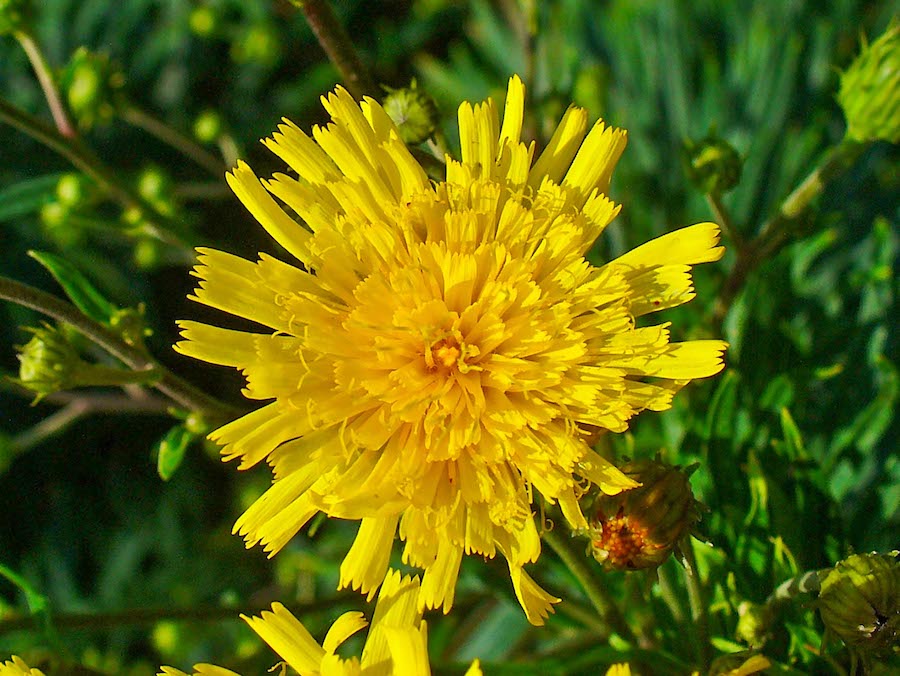
The wildflowers won’t wait for long! Print this field guide and get hiking our alpine hiking trails to discover B.C.’s most beautiful blossoms. Don't forget dogs are welcome on Big White's Sightseeing Chairlift rides and our alpine hiking trails.




